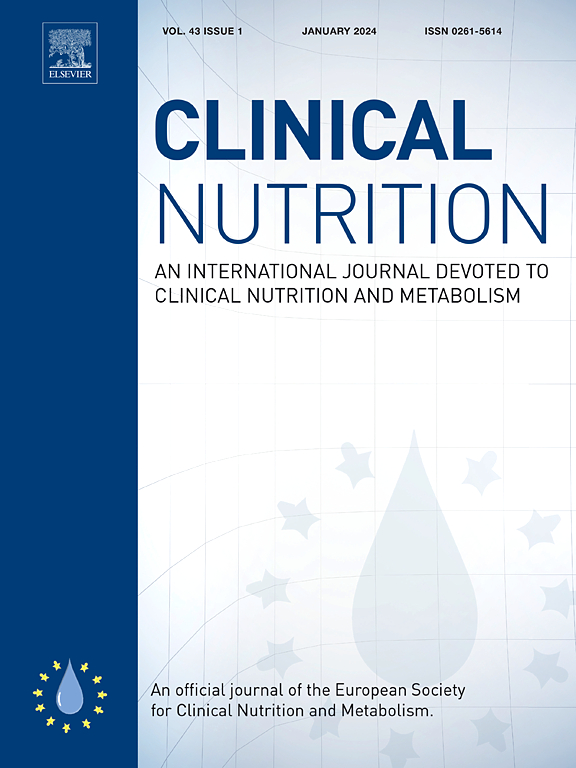Circulating fatty acid profiles impact total, cardiovascular disease, and cancer mortality in a population-based prospective cohort study
IF 6.6
2区 医学
Q1 NUTRITION & DIETETICS
引用次数: 0
Abstract
Background
Evidence linking circulating fatty acids (FAs) to mortality from age-related chronic diseases was limited and inconsistent. We aimed to investigate the associations of plasma FAs with total, cardiovascular disease (CVD), and cancer mortality and explore the potential mechanism.
Methods
117,871 individuals were prospectively followed in the UK Biobank. Circulating FAs were measured by a high-throughput NMR-based metabolic platform. Causes and dates of death were collected from death certificates according to the code of International Statistical Classification of Diseases (ICD-10).
Results
Over a median follow-up of 11.9 years, 7805 (6.6 %) deaths occurred. Plasma saturated FAs (SFAs) were positively associated with total mortality risk while plasma polyunsaturated FAs (PUFAs) exhibited an inverse association. For cause-specific mortality, circulating PUFAs, linoleic acid (LA), and n-3 PUFAs were associated with 34 %, 30 %, and 37 % lower risk of CVD mortality, respectively. Moreover, plasma n-3 PUFAs were related to a 24 % lower risk of cancer mortality. However, circulating non-LA n-6 PUFAs were associated with 11 % and 22 % higher risk of total and cancer mortality, respectively. Serum levels of C-reactive protein (CRP) and apolipoprotein A (ApoA) had significant mediation effects on these associations. Additionally, the inverse association of plasma n-6 PUFAs with total mortality only existed among carriers of the GG genotype at rs16966952 and the inverse association of plasma PUFAs with CVD mortality was only observed among TT genotype carriers at rs174547.
Conclusions
Circulating PUFAs, particularly n-3 PUFAs and LA, were inversely related to premature death from chronic diseases and longevity. Inflammatory and lipid metabolism partially explained these associations. Genetic interactions with rs16966952 and rs174547 further modified these associations.
求助全文
约1分钟内获得全文
求助全文
来源期刊

Clinical nutrition
医学-营养学
CiteScore
14.10
自引率
6.30%
发文量
356
审稿时长
28 days
期刊介绍:
Clinical Nutrition, the official journal of ESPEN, The European Society for Clinical Nutrition and Metabolism, is an international journal providing essential scientific information on nutritional and metabolic care and the relationship between nutrition and disease both in the setting of basic science and clinical practice. Published bi-monthly, each issue combines original articles and reviews providing an invaluable reference for any specialist concerned with these fields.
 求助内容:
求助内容: 应助结果提醒方式:
应助结果提醒方式:


